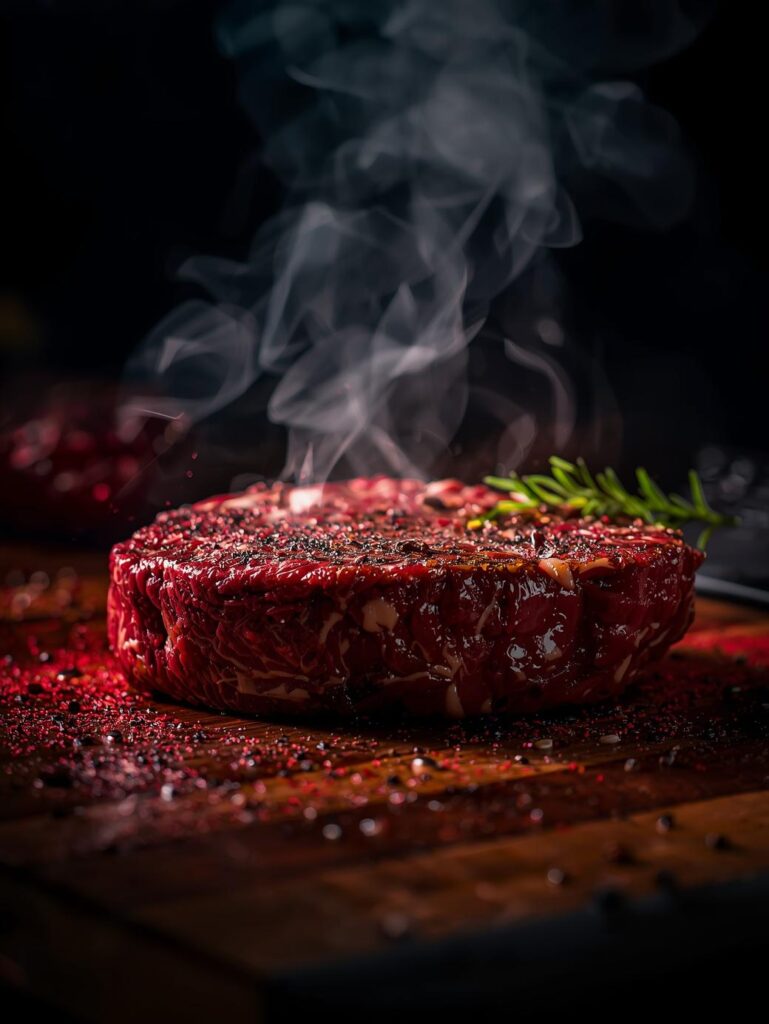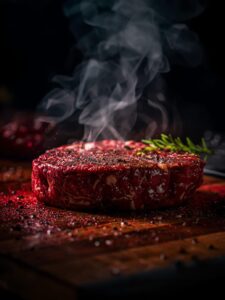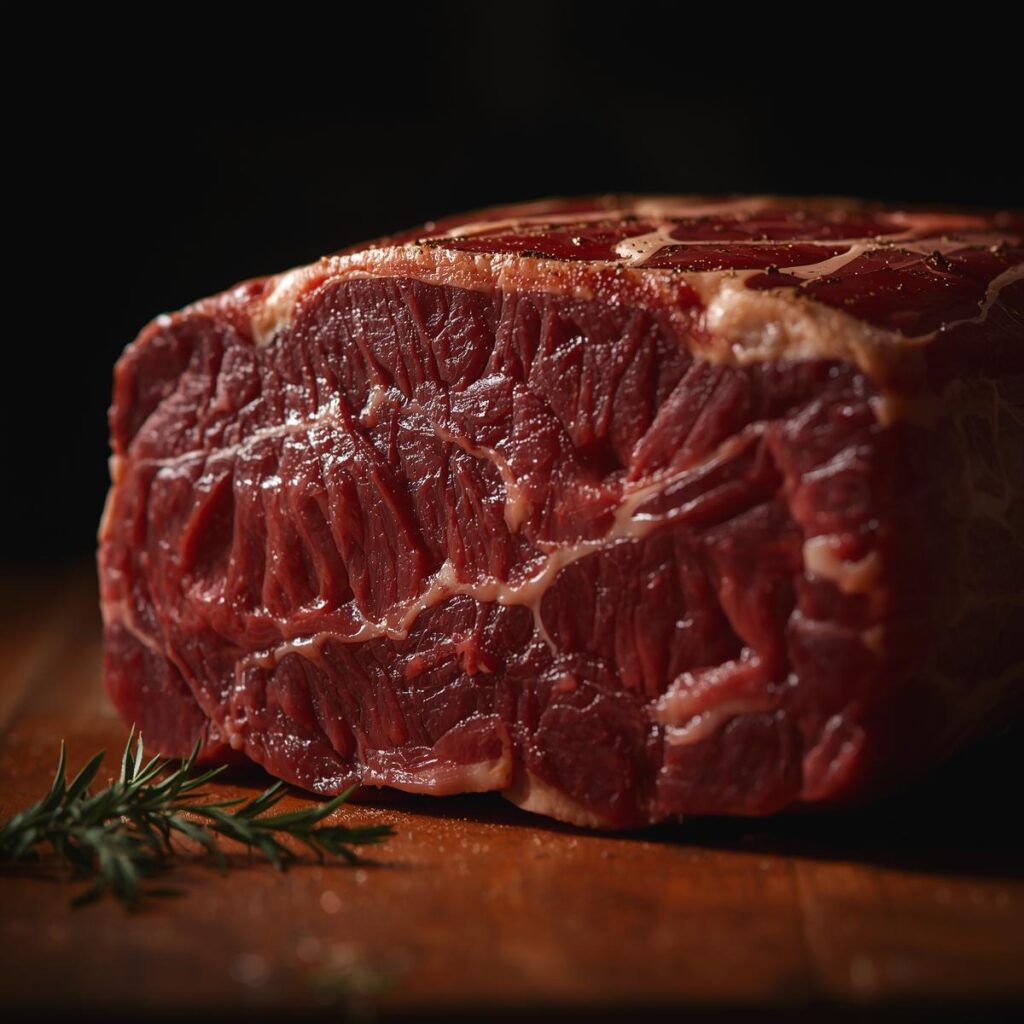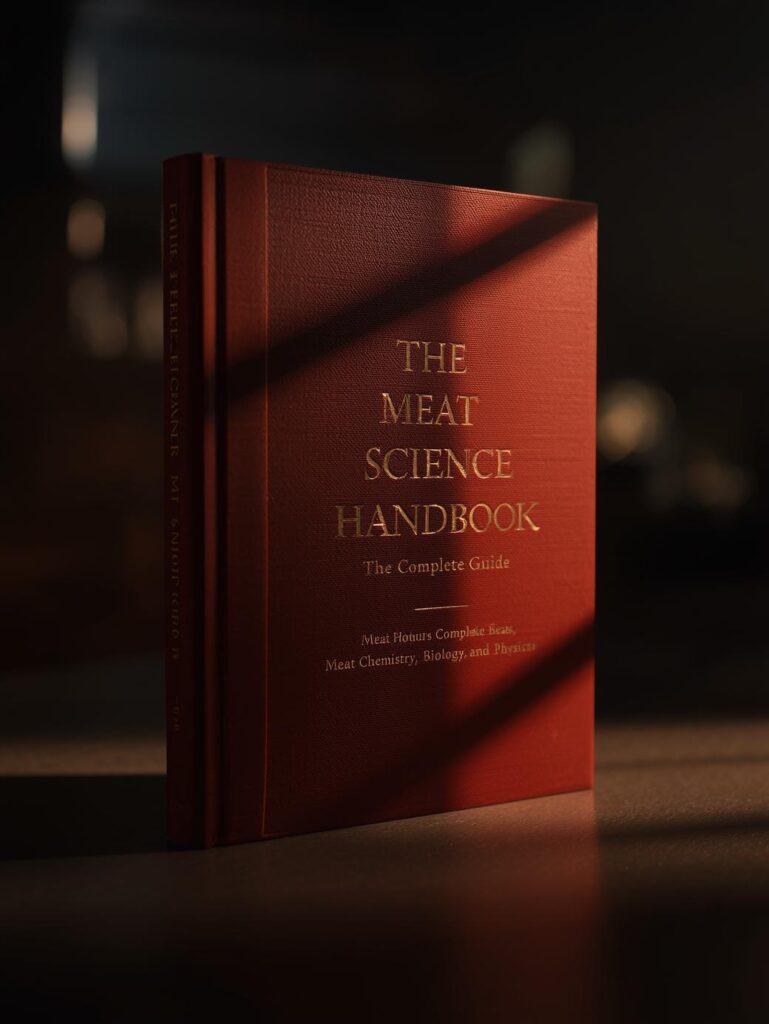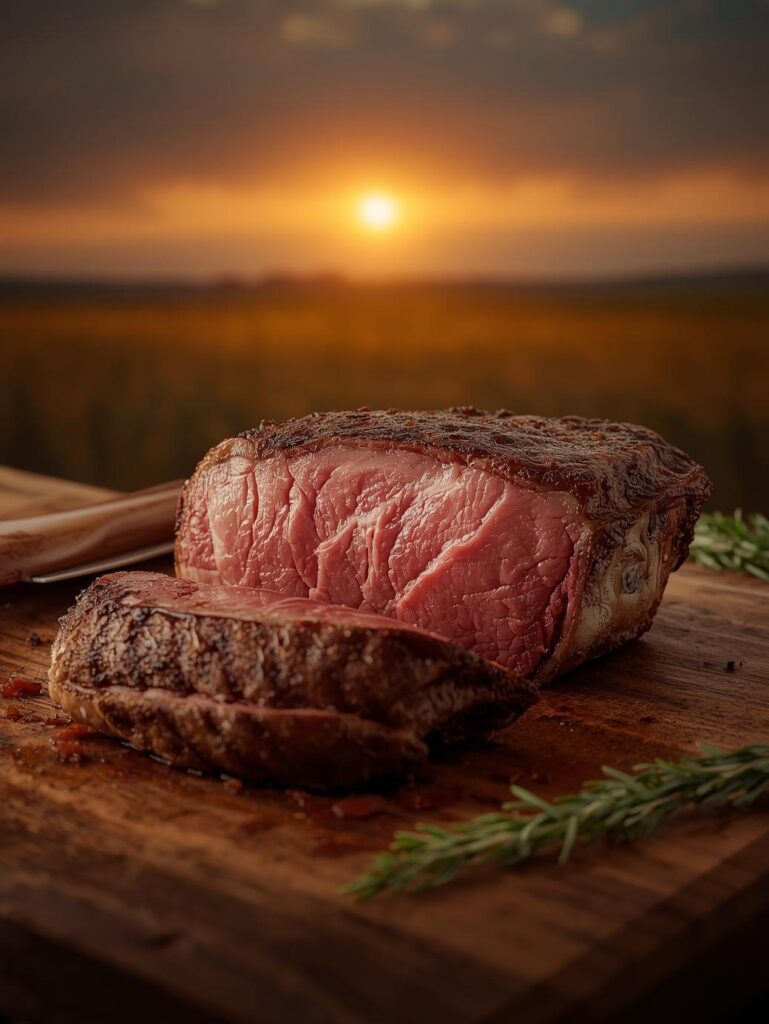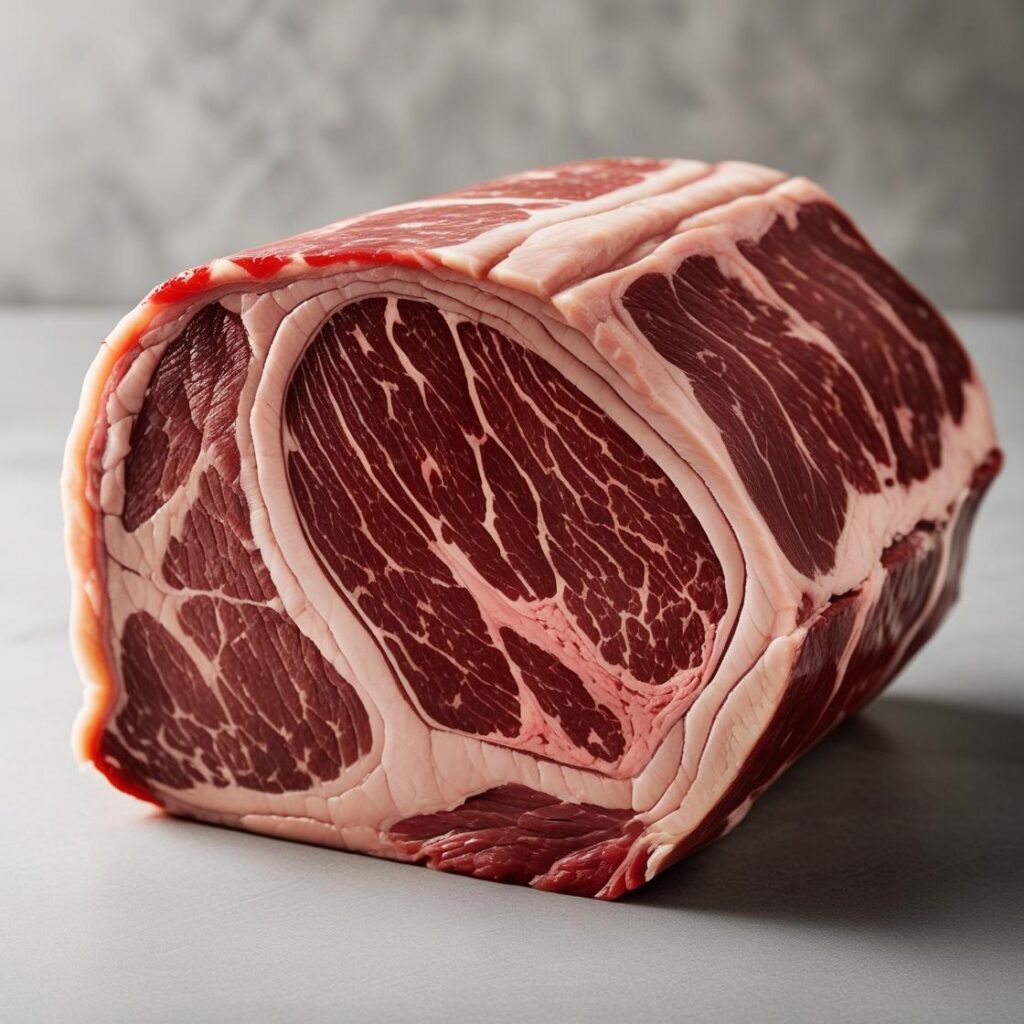Meat Scientist’s Note: This guide reveals what your eyes can’t see but your taste buds definitely experience. Myoglobin and pH aren’t just laboratory terms—they’re the invisible architects of every steak’s color, juiciness, and flavor. Understanding this molecular dance transforms you from someone who cooks meat into someone who understands it. Forget guessing; this is about knowing why a rare steak is red, why dry-aged beef tastes nutty, and why some meat stays juicy while others turn to leather.
“Myoglobin is the artist that paints your steak red, while pH is the conductor that orchestrates its texture. When you understand their partnership, you stop cooking by timer and start cooking by chemistry. The perfect steak isn’t an accident—it’s a biochemical masterpiece where protein structures, pigment molecules, and acid levels align in delicious harmony.”
Meat Science: Understanding Myoglobin and pH – The Hidden Chemistry of Perfect Steaks
Download Your Free Meat Science Color & Texture Guide
Welcome to the laboratory inside your steak, where microscopic pigments and acid levels determine everything from market appeal to mouthfeel. While most cooks focus on external factors like heat and time, master pitmasters understand that true control begins at the molecular level. This guide will decode the secret language of myoglobin and pH, transforming how you select, handle, and cook every piece of meat.
🎯 THE MYOGLOBIN MASTERCLASS: WHY YOUR STEAK IS RED
Myoglobin isn’t just color—it’s the respiratory system of muscle tissue that tells the story of the animal’s life.
⚙️ The Three States of Myoglobin Color Chemistry
The Color-Changing Protein
- Deoxymyoglobin (Purple-Red): The native state inside vacuum-sealed packaging. When no oxygen is present, myoglobin appears purple—this is why freshly cut meat has that deep, wine-colored hue before it “blooms.”
- Oxymyoglobin (Bright Red): The supermarket showcase color. When oxygen binds to myoglobin, it creates the familiar cherry-red color that consumers associate with freshness. This is the “bloom” that occurs when you open packaged meat.
- Metmyoglobin (Brown-Gray): The oxidation endpoint. When the iron in myoglobin oxidizes (loses an electron), it turns brown. This doesn’t mean spoiled—it means the pigment has changed. This is why aged beef looks different but tastes incredible.
🎯 Myoglobin vs. Hemoglobin: The Muscle vs. Blood Myth
❌ Common Misconception
- “Red juice is blood”
- Color indicates blood content
- Brown meat means old meat
- Washing removes “blood”
- Color equals freshness
- All red meat is the same
✅ Scientific Reality
- Red juice is myoglobin + water
- Color indicates muscle activity
- Brown can mean perfectly aged
- Washing damages surface texture
- Color indicates oxygen exposure
- Myoglobin varies by muscle use
🔬 THE PH STORY: THE INVISIBLE ARCHITECT OF TEXTURE
While myoglobin handles color, pH determines whether your steak will be tender or tough, juicy or dry.
🗣️ The pH Scale Demystified
From Acid to Alkaline in Meat
- Normal pH Range (5.4-5.8): Most beef falls here. At slaughter, muscle pH is around 7.0 (neutral). As glycogen converts to lactic acid post-mortem, pH drops to around 5.6, creating ideal water-holding capacity and texture.
- High pH/Dark Cutting (6.0+): When animals experience stress before slaughter, they deplete glycogen stores. Less lactic acid forms, resulting in higher pH meat that’s darker, firmer, and has better water retention but can taste metallic.
- Low pH/Pale Soft Exudative (5.3-): In stressed pigs or certain genetics, rapid pH drop causes pale, soft, watery meat with poor texture. The proteins denature too quickly, squeezing out moisture.
📊 The Myoglobin & pH Interaction Matrix
🎯 How Color and Texture Tell the Meat’s Story
| Meat Condition | Myoglobin State | pH Level | Visual Clues | Texture Impact |
|---|---|---|---|---|
| Fresh Retail Beef | Oxymyoglobin (Red) | 5.5-5.8 | Bright cherry red, firm | Ideal juiciness, good bite |
| Vacuum-Packed | Deoxymyoglobin (Purple) | 5.6-5.9 | Purple-red, moist surface | Excellent water retention |
| Dry-Aged Premium | Metmyoglobin (Brown) | 5.4-5.7 | Dark brown, firm crust | Intense flavor, tender |
| Dark Cutter | Deoxymyoglobin (Dark) | 6.2-6.5 | Dark purple, dry surface | Firm, chewy, metallic notes |
| PSE Pork | Pale Oxymyoglobin | 5.2-5.4 | Pale, soft, watery | Mushy, dry when cooked |
🔥 PRACTICAL APPLICATIONS: FROM SCIENCE TO STEAK
Transform theoretical knowledge into tangible cooking improvements.
🎪 Color Reading at the Butcher Counter
What Your Eyes Are Really Telling You
- Bright Red Surface: Recently exposed to oxygen, fresh-looking but doesn’t necessarily indicate better quality—just recent cutting or packaging.
- Brown Patches: Normal oxidation, not spoilage. If the meat smells fine and feels firm, it’s perfectly good. This is especially true for dry-aged beef where browning is desirable.
- Two-Tone Coloring: The oxygen-exposed surface is red while the interior remains purple. This is normal for freshly cut steaks and will even out.
- Rainbow Iridescence: Not spoilage! This optical effect occurs when light reflects off the muscle fibers and is completely harmless.
🛠️ pH Manipulation in Cooking
How Marinades and Techniques Affect Texture
- Acidic Marinades: Vinegar, wine, or citrus lower surface pH, denaturing proteins and creating a “cooked” texture on the outside while tenderizing. But over-marinating turns meat mushy.
- Enzymatic Marinades: Pineapple, papaya, or ginger contain enzymes that break down proteins. These work independently of pH but are affected by it.
- Salting Strategy: Salt draws out moisture (lowering local pH) initially, then through osmosis, is reabsorbed with the dissolved proteins, improving water retention and flavor. Learn the science in our Professional Seasoning Guide.
- Aging Processes: Dry aging naturally lowers pH through controlled enzymatic action, while wet aging maintains higher pH in vacuum-sealed environments.
🍖 MEAT SELECTION MASTERY THROUGH SCIENCE
Use myoglobin and pH knowledge to choose better meat every time.
🥩 Shopping by Color Intelligence
Beyond “Red = Good”
- Beef Selection: Look for consistent color rather than brightness. Very bright red might mean recent cutting, not better quality. Some browning on edges is normal.
- Lamb Assessment: Younger lamb is lighter red (less myoglobin), while mature lamb is deeper red. Don’t mistake age for quality—choose based on your recipe needs.
- Pork Evaluation: Look for grayish-pink color, not extremely pale. Avoid pork with excessive liquid in packaging, which indicates PSE condition.
- Game Meat Understanding: Wild game is typically darker (more myoglobin from muscle use) and can have stronger flavors due to different pH profiles.
🧂 The Cooking Chemistry Connection
How Heat Changes Everything
- Denaturation Temperature: Myoglobin begins to denature at 140°F (60°C), changing from red to brown-gray. This is why doneness levels have characteristic colors.
- Protein Shrinking: As pH decreases during cooking, protein structures tighten and squeeze out water. Understanding this helps you prevent dry steak.
- Caramelization vs. Maillard: Myoglobin changes color through denaturation, while browning reactions create flavor compounds through different chemical processes.
- Resting Science: As meat rests, pH equalizes and proteins reabsorb some moisture, explaining why rested meat is juicier.
📋 THE MEAT SCIENCE TROUBLESHOOTING GUIDE
🎯 Solving Common Problems Through Biochemistry
| Problem | Scientific Cause | Myoglobin/pH Relationship | Practical Solution |
|---|---|---|---|
| Tough, Dry Texture | Rapid protein denaturation | Low pH + high heat = moisture loss | Cook slower at lower temperatures, choose higher pH meat |
| Gray Meat Before Cooking | Metmyoglobin formation | Oxidation over time | Normal for aged meat, check smell and texture rather than color alone |
| Mushy Marinaded Meat | Over-denaturation by acid | Surface pH too low for too long | Shorter marinade times, use oil-based marinades for delicate meats |
| Excessive Purge in Package | Poor water retention | Low pH or protein damage | Pat dry before cooking, consider different source or cut |
🏁 MASTERING THE MOLECULAR DANCE
Understanding myoglobin and pH transforms meat cooking from mysterious art to predictable science. Remember that color tells a story about the meat’s history and handling, while pH determines its texture and water-holding capacity. The best cooks use both visual cues and understanding of underlying chemistry to make better decisions at every stage.
Your new knowledge means you’ll never again fear a slightly brown steak, over-marinate delicate cuts, or misunderstand why different animals produce different colored meat. You’re now equipped to select, handle, and cook with the confidence of someone who understands what’s happening beneath the surface.
🔬 DEEP DIVE INTO MEAT SCIENCE →
Explore the complete guide to meat chemistry, biology, and cooking physics
Explore More Meat Science: Continue your journey into the fascinating world of food science.

